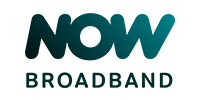

















Our broadband availability checker finds all types of broadband including full fibre in your area so you can compare the best prices and speeds.
Enter your full postcode and select your address.
We'll find you the best deals and providers in your area.
Sign up to your new broadband provider and start saving.

Before choosing a new broadband deal, the very first thing you need to consider is what's available where you live. It may be that you'd really like to get a super-fast gigabit full-fibre deal but, ultimately, you're going to be limited by the broadband network technologies available in your postcode.
Enter your postcode in the box at the top of this page and we'll show you what you can get. It's that simple. For those curious about the details, we’ll get into which technologies exist, how they differ, and how likely you are to get each of them in our guide below.
You're in the right place to find out which broadband deals are available in your postcode. Compare like a pro in five easy steps:
Of course, not everyone comes into their search knowing what speed they need. Don't worry! We have a tool that'll help you find out. Just hit 'Get started' below:
Let us help guide you to your new broadband deal. We'll check speeds and providers at your home, saving you time and money.
The speeds available to your home depend on the types of broadband technology running through your street. Let's take a look at the types of broadband that are widely available in the UK so you can better understand why you get certain speeds in your area.
Where you live will determine which of the two widely available broadband networks (Openreach and Virgin Media) you’re able to get, and which technologies are available on those networks. These networks are the physical web of cables, cabinets and exchanges that bring the technology to our homes.
Here's a look at the four types of broadband technology:
| Technology | Also known as |
|---|---|
| ADSL | Standard broadband, fast broadband |
| FTTC | Fibre to the cabinet, superfast broadband |
| FTTH | Full fibre, ultrafast broadband, gigabit broadband |
| Cable broadband | Virgin Media Broadband |
Don’t worry if any of that terminology is confusing. All you really need to understand is:
Broadband speeds can vary significantly depending on several factors, including connection type, your distance from the nearest green cabinet, and whether you live in a rural or built-up area. Here’s a breakdown of the elements affecting your broadband speed:
The type of broadband connection you have plays a significant role in the speeds you can achieve. For example, Full Fibre (FTTP) offers the fastest speeds, reaching up to 1.6Gbps (or even faster with some small altnets), while ADSL provides the slowest at around 10-17Mbps. Fibre-to-the-cabinet (FTTC), which combines fibre-optic and copper cables, delivers speeds up to around 74Mbps in a best-case scenario, but this decreases depending on your distance from the nearest green cabinet on the street. Cable broadband, mind, is its own thing – exclusively available through Virgin Media and reaching speeds of up to 1.13Gbps (or 2Gbps to a handful of UK homes).
Here's a look at the key broadband types available in the UK, including their download/upload speeds and national availability (%) as of September 2024:
| Type of connection | Download speed range | National availability (%) |
|---|---|---|
| ADSL | 10-17Mbps | Universal |
| FTTC (Fibre-to-the-cabinet) | 35-74Mbps | 96% |
| FTTP (Fibre-to-the-premises) | 50Mbps-7Gbps | 62% |
| Cable broadband (Virgin Media) | 50Mbps-2Gbps | 60% |
*Only offered to customers who cannot get anything else
The broadband options available in your area will depend on your location. Large towns and cities typically have more access to Full Fibre or Virgin Media’s cable network, both of which can offer ‘gigabit’ speeds, while rural areas may only have slow ADSL or limited fibre availability. Full Fibre is currently available to around 62% of UK homes, though this figure is growing steadily.
If you’re using ADSL or FTTC Fibre, your distance from the nearest green street cabinet or exchange will impact the speed you can get. This is why rural and remote homes often come with disastrously slow broadband: Speeds typically start to decline beyond 300m from the cabinet. At around 500m, the download speed drops to a maximum of about 60Mbps, at 1km speeds may reduce to around 28Mbps, and at 1.5km, speeds fall to under 15Mbps.
You can go out and get that 1Gbps broadband deal if you want, but if you're expecting your Wi-Fi devices to be able to use that speed we have some bad news for you: Even bleeding edge Wi-Fi 6 routers, coupled with mid-range devices often won't deliver a signal much over 600-700Mbps to any one device, and that's if your device is right next to the router. If there are walls and electronics and other routers present from neighbouring homes, obstruction and interference can and will slow your Wi-Fi further.
The only way to get your full speed from the fastest connections is to connect via a LAN cable, and if you want strong, fast Wi-Fi in every room of your house, we recommend taking out a whole-home Wi-Fi add-on like Complete Wi-Fi from BT, Sky Wi-Fi Max or Virgin Wi-Fi Max. These bolt-ons add repeaters to your home router layout as required, thereby extending the range and strength of your Wi-Fi.
The speeds advertised by providers are the speeds received by at least 50% of their customers at that package level. But the real-world performance may differ depending on all of the above factors. Bear that in mind when choosing a broadband deal and remember that it's always safer to go for the next package up from the speed you feel suits your household.
There are three types of providers:
Most providers are on the Openreach network. Here’s a brief overview:
| Broadband Provider | Network | Average download speed | Average upload speed | Top advertised speed |
|---|---|---|---|---|
| BT | Openreach | 95Mbps | 29Mbps | 900Mbps |
| BeFibre | Own network | - | - | 900Mbps |
| Community Fibre | Own network | 308Mbps | 282Mbps | 3Gbps |
| EE | Openreach | 48Mbps | 16Mbps | 900Mbps |
| Gigaclear | Own network | 153Mbps | 174Mbps | 900Mbps |
| Hyperoptic | Own network | 223Mbps | 219Mbps | 900Mbps |
| NOW | Openreach | - | - | 63Mbps |
| Onestream | Openreach | - | - | 67Mbps |
| Plusnet | Openreach | 37Mbps | 10Mbps | 900Mbps |
| Sky | Openreach | 69Mbps | 22Mbps | 900Mbps |
| TalkTalk | Openreach | 55Mbps | 29Mbps | 900Mbps |
| Trooli | Own network | 261Mbps | 142Mbps | 900Mbps |
| Virgin Media | Own network | 179Mbps | 28Mbps | 2Gbps |
| Vodafone | Openreach | 93Mbps | 23Mbps | 910Mbps |
| Wildanet | Own network | 77Mbps | 60Mbps | 910Mbps |
| YouFibre | Own network | 323Mbps | 305Mbps | 10Gbps |
No single broadband provider covers the entire UK, but several providers offer services to the vast majority of the population. Here’s an overview of the major networks and their coverage:
Openreach operates the largest broadband network in the UK, providing access to a wide range of broadband providers, including BT, Sky, TalkTalk, and Plusnet. Openreach covers almost all UK homes via ADSL and 96 % via fibre-to-the-cabinet (FTTC) connections. Full Fibre (FTTP) availability, however, is more limited and currently reaches around 62% of UK homes, as rollout continues.
| Provider | Download speed range | Upload speed range | Availability (%) |
|---|---|---|---|
| BT | 10Mbps - 900Mbps | 1Mbps - 110Mbps | All (ADSL), 96% (FTTC), 62% (Full Fibre) |
| Sky | 10Mbps - 900Mbps | 1Mbps - 100Mbps | All (ADSL), 96% (FTTC), 62% (Full Fibre) |
| Plusnet | 10Mbps - 910Mbps | 1Mbps - 100Mbps | All (ADSL), 96% (FTTC), 62% (Full Fibre) |
| TalkTalk | 11Mbps - 944Mbps | 1Mbps - 100Mbps | All (ADSL), 96% (FTTC), 62% (Full Fibre) |
| NOW Broadband | 10Mbps - 300Mbps | 1Mbps - 40Mbps | All (ADSL), 96% (FTTC), 62% (Full Fibre) |
| Vodafone Broadband | 35Mbps - 1.6Gbps | 5Mbps - 120Mbps | 96% (FTTC), 62% (Full Fibre) |
| EE Broadband | 36Mbps - 2.2Gbps | 10Mbps - 2.2Gbps | 96% (FTTC), 62% (Full Fibre) |
| Rebel Internet | 50Mbps - 1Gbps | 20Mbps - 110Mbps | 96% (FTTC), 62% (Full Fibre) |
Virgin Media offers coverage to approximately 60% of UK homes. It delivers some of the fastest broadband speeds available via its cable network. Its Gig1 service provides on average 1.13Gbps to its entire existing network, while the Gig2 package is currently available, but only to a handful of UK homes. Virgin Media’s coverage tends to be focused on urban and suburban areas, with far less availability out in the sticks.
Altnets like Hyperoptic, Community Fibre, and Gigaclear are expanding their reach but are still limited to specific areas. These providers often focus on urban centres, blocks of flats, or underserved rural locations. While their national coverage is smaller, they play a critical role in providing ultrafast broadband in select locations where larger providers may be a very long time coming to.
Your chances of getting a particular altnet where you live aren't good. However, with so many of them up and down the country, your chances of getting an altnet aren't vanishingly small either. Altnets tend to provide very fast broadband more cheaply than national providers. Here are a selection of the altnets you can compare on Cable.co.uk, along with the areas you'll typically find them:
| Altnet | Download speed range | Upload speed range | Areas served |
|---|---|---|---|
| Community Fibre | 50Mbps - 3Gbps | Symmetrical | Parts of London and nearby areas |
| BeFibre | 100Mbps - 1Gbps | Symmetrical | Cheshire, Essex, Staffordshire, and other parts of England |
| Gigaclear | 100Mbps - 1Gbps | Symmetrical | Rural parts of Oxfordshire, Essex, Gloucestershire, and the South West |
| Hyperoptic | 50Mbps - 1Gbps | Symmetrical | Urban areas across major cities such as London, Manchester, Birmingham, Leeds |
| Fibrus | 100Mbps - 2Gbps | Symmetrical | Northern Ireland and parts of Cumbria |
| Airband | 40Mbps - 900Mbps | 200Mbps max upload | Rural areas in the South West, West Midlands, Wales |
Most UK homes will only see the main providers pop up in their search results after entering their postcode – Sky, Virgin Media, and so on – but some may also find a local provider or two is available. Local providers are usually what's known as an 'altnet', or 'alternative network'. They operate on their own network (not Openreach or Virgin Media) and serve clusters of homes and businesses in specific towns, cities and villages. Some, such as Gigaclear, even specialise in bringing ultrafast broadband to very, very rural locations.
If you see an altnet listed when you enter your postcode, do consider signing up to it. Most of them are very good indeed, providing extremely fast broadband via truly excellent equipment. They also tend to offer exceptional value for money.
Here are some things most, but not quite all, altnets have in common:
Should that have piqued your interest about altnets, we've reviewed a whole bunch of them in our reviews section.
Choosing the right broadband deal means taking into account several factors to ensure that it meets your household's needs, while also offering good value. Here are the key aspects to consider when making your decision:
Expert tip: If you've worked out what speed you need, go for the next speed up from it. The cost difference is usually negligible, but the harmony of your household will likely increase with the extra headroom!
The first step is to check what broadband providers and technology are available in your area. Full Fibre (FTTP) and Virgin Media’s cable network are known for offering the fastest speeds, but their availability isn't universal, unlike ADSL and FTTC Fibre, and that's particularly the case in rural areas. Make use of our availability checker at the top of this page to confirm what’s available at your address.
Your required broadband speed depends on your household’s usage. For basic browsing and streaming in HD, speeds of 30+Mbps should be enough for the whole house. If your household streams in 4K, plays a lot of videogames, or frequently downloads other sorts of large files you will need 100Mbps-plus. Full Fibre packages can offer speeds up to 1.6Gbps (or higher with some altnets), but be mindful that you may not need such high speeds, and that speeds beyond 1Gbps require special networking hardware that most households simply don't have.
Some providers offer packages that bundle broadband with TV and/or phone services. If you’re already paying for a TV service or home phone line, a bundled deal may offer better value. For example, providers like BT (EE TV), Sky (Sky TV), and Virgin Media (Virgin TV) offer attractive bundles combining broadband with TV, as well as home phone packages for those who need them. Assess whether a bundle is useful to you or whether instead you’re going to simply add unnecessarily to your monthly costs.
Broadband contracts usually last between 12 and 24 months. While shorter, rolling contracts are available from the likes of NOW Broadband and Virgin Media, they typically come at a higher monthly cost. Sadly, 24 month contracts are fast becoming the norm – restricting customer choice while typically offering no counter-benefits like fixed pricing.
Consider any extras the provider might offer, such as Wi-Fi mesh systems or speed guarantees. Providers like BT and Sky offer add-ons like BT Complete Wi-Fi and Sky Wi-Fi Max, which improve Wi-Fi coverage across your home – particularly useful if you live in a large property. Other extras might include free streaming service trials, antivirus software, or public Wi-Fi access, which can add value depending on your needs.
Price is a key factor when choosing broadband, but be mindful of potential mid-contract price rises. Most providers increase prices annually in line with inflation plus 3.9%. However, some providers (like Vodafone Broadband and Rebel Internet) offer contracts that guarantee no mid-contract price hikes. However, from 17 January 2025, Ofcom will ban mid-contract price rises due linked to inflation.
Good customer service is crucial. Even the best broadband service can experience issues, so it’s important to choose a provider with a solid reputation for customer support. Ofcom's annual report on the number of complaints and satisfaction with how those complaints were handled is a great resource, but sadly doesn't cover smaller providers.
| Provider | Q2 2023 | Q3 2023 | Q4 2023 | Q1 2024 |
|---|---|---|---|---|
| BT | 13 | 11 | 11 | 9 |
| EE | 7 | 9 | 9 | 14 |
| NOW Broadband | 13 | 18 | 18 | 22 |
| Plusnet | 11 | 11 | 9 | 8 |
| Shell Energy | 13 | 13 | 14 | 6 |
| Sky Broadband | 5 | 5 | 5 | 6 |
| TalkTalk | 18 | 15 | 13 | 11 |
| Virgin Media | 15 | 32 | 20 | 18 |
| Vodafone | 24 | 15 | 14 | 16 |
| Industry Average | 12 | 15 | 12 | 11 |
Source: Ofcom

"When choosing broadband in your area it's vital to check which providers offer the fastest speeds and best deals. Availability can vary dramatically depending on your location, so always compare what’s available using our postcode checker."
Dan Howdle, Broadband and mobile expert
There's no simple answer to this question. The best broadband for you depends on two main factors: your budget and the speed you need for your household. Start by checking which providers and packages are available using our postcode checker at the top of this page. If you're a light internet user, a more affordable package with lower speeds may be suitable, but if your household streams, games, /and/or works from home, opting for a higher-speed Full Fibre packages or a top-end Virgin Media package will better suit your needs.
Here's a quick rundown of how some of the most notable national providers choose to differentiate themselves from the pack:
The cheapest broadband you can buy is now likely to be a 35Mbps fibre service, with prices starting at around £20 per month. Although standard ADSL broadband connections tend to be cheaper than fibre packages, providers are no longer offering them in areas where fibre connections are available (almost everywhere). Standard broadband connections are also slower and can be subject to usage limits and traffic management policies.
A 35Mbps fibre connection is ideal for general browsing, as well as streaming Netflix in a smaller household. It only costs a little more than a standard broadband connection, so it’s very affordable.
Broadband pricing in the UK varies significantly based on the provider, speed, and type of connection. Packages can range from entry-level ADSL deals to top-end Full Fibre (FTTP) and cable broadband services (Virgin Media). The table below summarises the pricing and speed ranges of the providers you can compare on Cable.co.uk:
| Provider | Download speed range | Price range per month (£) |
|---|---|---|
| BT | 10Mbps - 900Mbps | £29.99 - £47.99* |
| Sky | 10Mbps - 900Mbps | £27.00 - £42.00* |
| Plusnet | 10Mbps - 910Mbps | £25.99 - £39.99* |
| TalkTalk | 11Mbps - 944Mbps | £28.00 - £45.00* |
| NOW Broadband | 10Mbps - 300Mbps | £22.00 - £29.00* |
| Vodafone Broadband | 35Mbps - 1.6Gbps | £24.00 - £65.00* |
| EE Broadband | 36Mbps - 1.6Gbps | £29.99 - £69.99* |
| Rebel Internet | 50Mbps - 1Gbps | £35.00 - £55.00* |
| Virgin Media | 100Mbps - 2Gbps | £24.00 - £84.00* |
| Community Fibre | 50Mbps - 920Mbps | £20.00 - £32.00* |
| BeFibre | 100Mbps - 900Mbps | £22.00 - £45.00* |
| Gigaclear | 100Mbps - 900Mbps | £19.00 - £29.00* |
| Hyperoptic | 50Mbps - 1Gbps | £17.99 - £44.00* |
| Fibrus | 100Mbps - 1Gbps | £24.99 - £49.99* |
| Airband | 40Mbps - 900Mbps | £25.00 - £55.00* |
*Pricing is correct at the time of writing
We price check the best broadband deals from the top providers every day.
See all broadband providersOur expert advisors have access to special offers and can create a personalised package just for you. Give us a call!
Call 0333 210 1160We're available from 8am-8pm, Monday to Sunday
The broadband speed you need depends on your household size and what each member of your household uses broadband for. Light users (emails, browsing) may only need 10-30Mbps. Average households streaming HD content or making video calls need 35-100Mbps. For gaming and 4K streaming, a speed of 100Mbps or higher is recommended, not for the gaming itself, but for the time it takes to download and update new titles these days.
Advertised speeds are the minimum speeds received by at least 50% of the provider's customers for that specific package or speed level. You may or may not get the speed advertised depending on the type of broadband.
Switching broadband providers is usually simple and involves minimal disruption. Your new provider will typically handle the switch. If you are still within a contract, you may face early exit fees however, so check your current terms before switching.